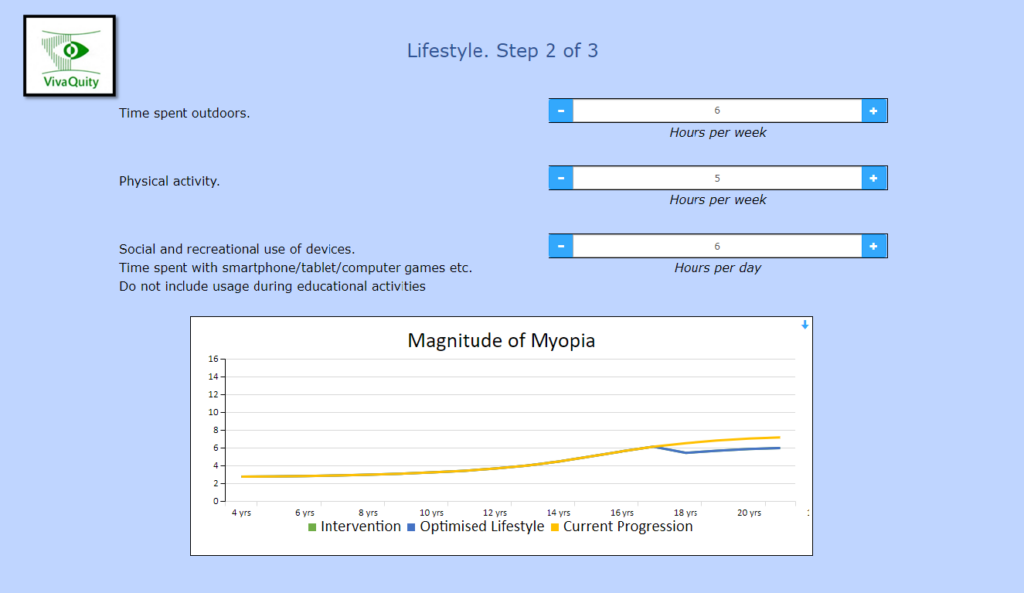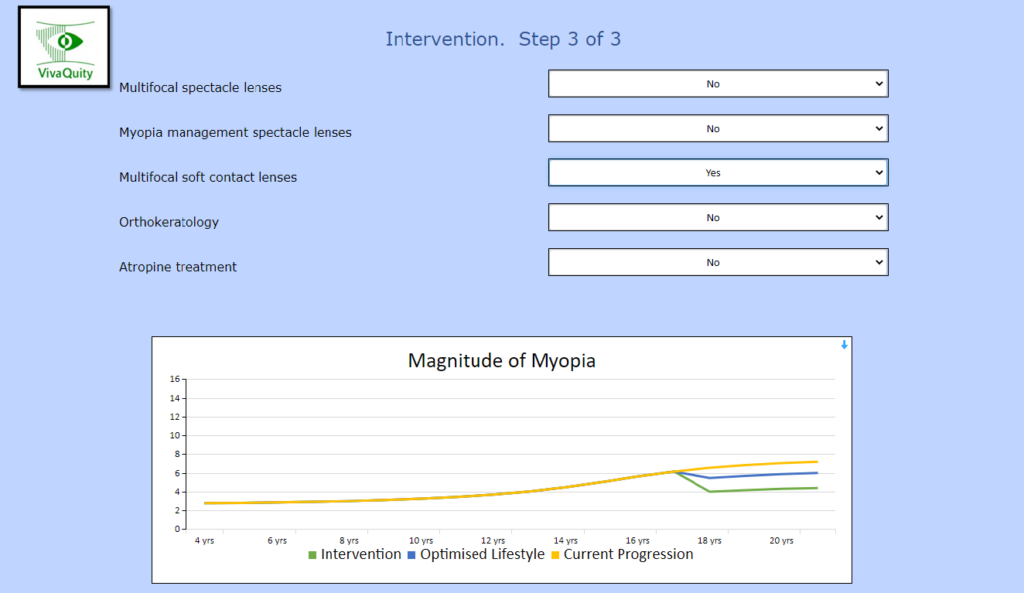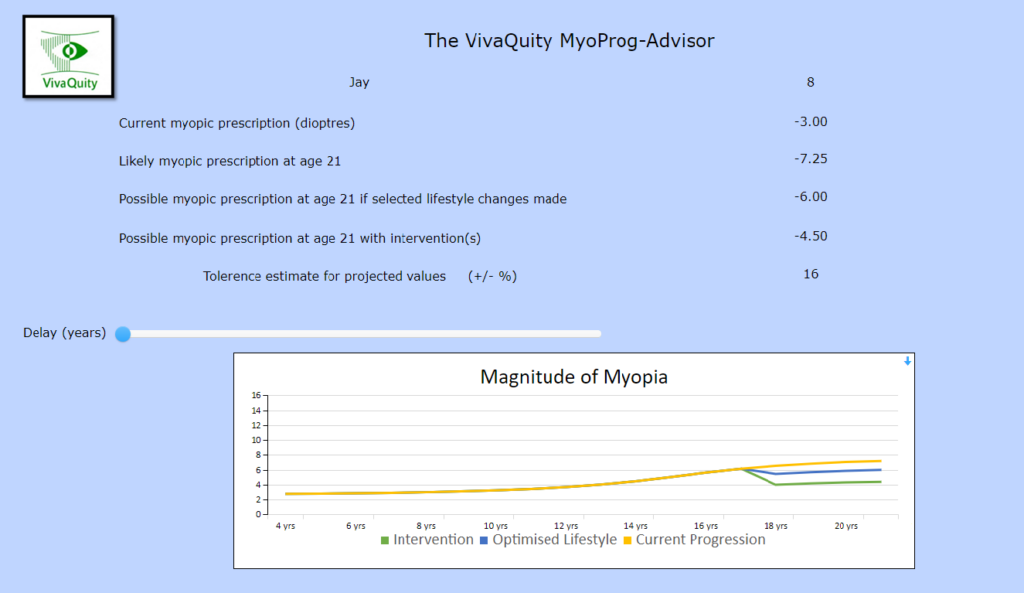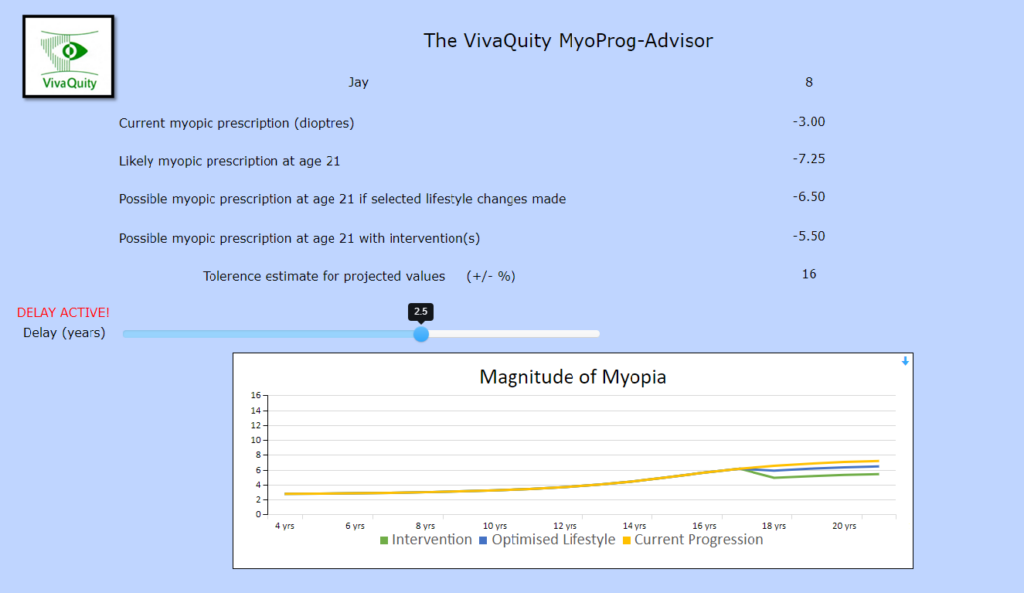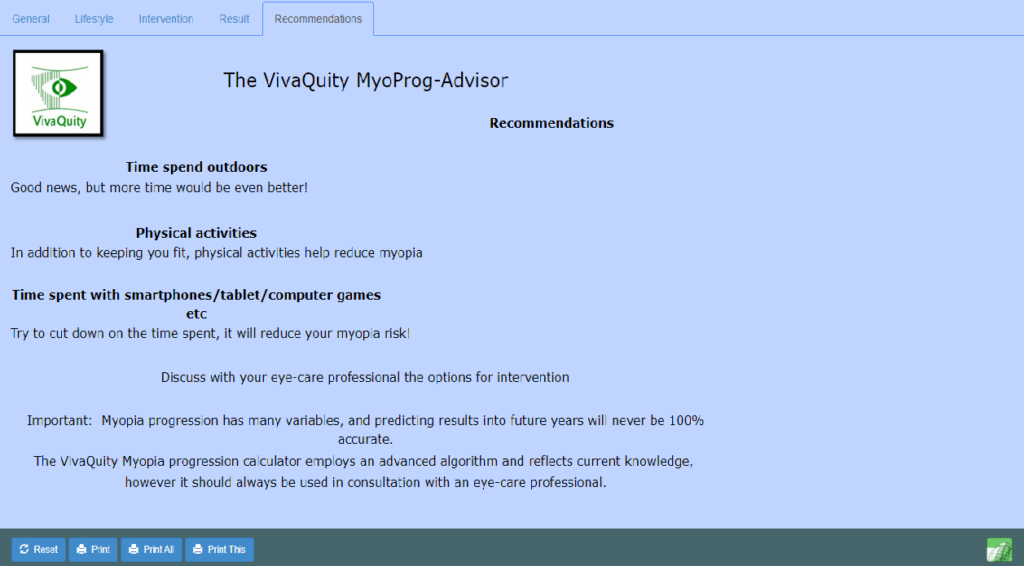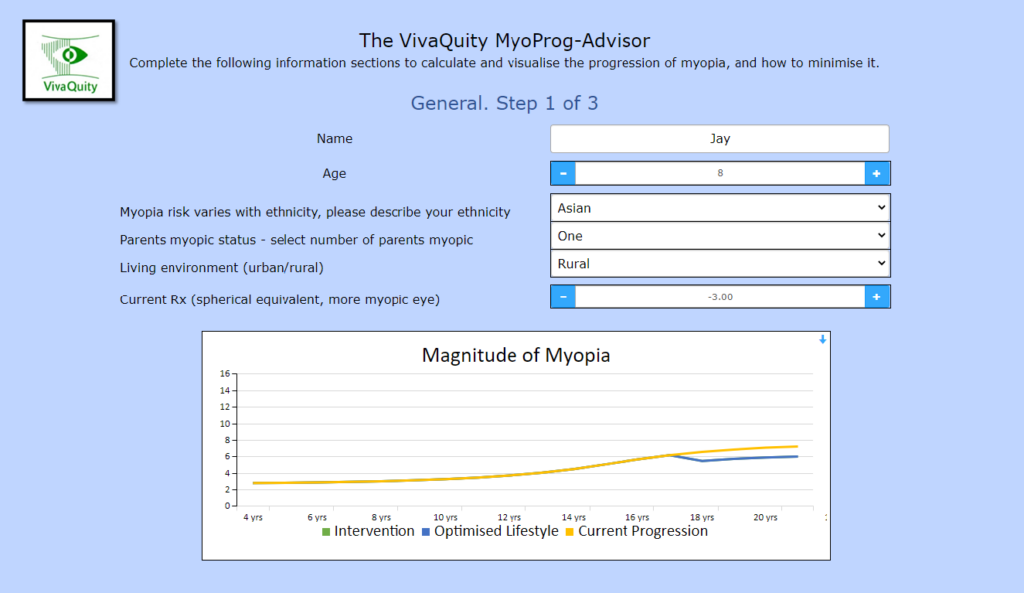
The VivaQuity MyoProg-Advisor (myopia progression calculator) has been created from an optometrist’s perspective to converse with families more easily regarding what influences myopia progression, and what can be done to control the progression.
It is presented in sections, each section providing an interactive chart to instantly display changes in progression resulting from different scenarios.
Of note, the chart is displayed with a positive scale, with fixed axes vertically (magnitude of myopia) and horizontally (age). The fact that we as eye-care professionals understand that the dioptric maths of spectacle lenses requires a negative range for myopia, perhaps makes it no easier for patients to understand. High myopia = more minus can take valuable time to explain. The problem is easily overcome by using magnitude of myopia which is always a positive value.
In the first section (general), name and age are entered, together with options for ethnicity, number of parents myopic, and living environment.
Section two is the lifestyle section. With entries for time spent outdoors, time devoted to physical activities, and time spent with devices. Near vision during educational activities is not included, as it is best considered as a non-modifiable risk. The lifestyle risk curve is displayed below the current progression risk curve, clearly indicating the reduction in myopic magnitude from the age of 18 to 21, compared to the current progression curve. If the lifestyle factors are already fully optimised, then no lower curve will appear as there is no room for improvement.
Section three is the intervention section. Options include multifocal spectacle lenses, myopia management soft contact lenses, orthokeratology, atropine treatment. Selecting one or more intervention options will generate a third display curve indicating the predicted reduced magnitude of myopia from the age of 18 to 21.
In this section, the current spectacle prescription is listed, followed by the likely spectacle prescription at the age of 21, followed by the possible spectacle prescription at the same age if available lifestyle changes were to be made, and the possible prescription with the addition of intervention. Both the lifestyle and intervention effects are related to the age of uptake.
Maximum potential reduction in age 21 myopia is calculated when action is taken up to the age of eight. Between the age of eight and fifteen, the potential reduction in age 21 myopia falls away to zero at the age of fifteen. By means of the ‘Delay’ slider the consequence of delaying remedial action is made clear. The reduction in the potential benefits of lifestyle and intervention visibly reduce, as the graphs are fully interactive.
The final section, Recommendations, lists a summary of recommendations, based upon the inputted answers, and can form a basis for discussion.
All sections, or parts, can be saved to PDF and or printed. The ‘Reset’ button resets the calculator to default entries ready for your next young patient.

